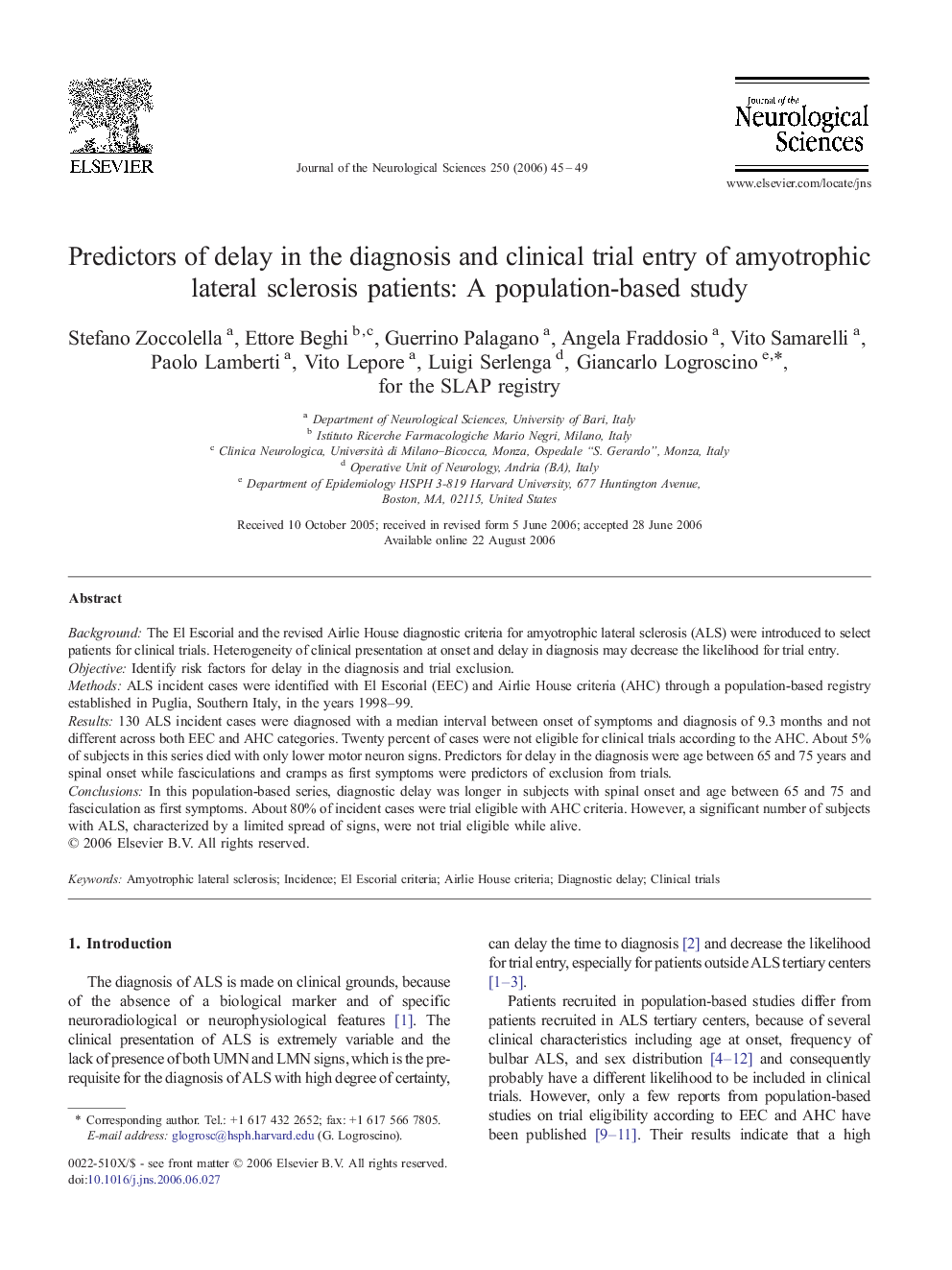| Article ID | Journal | Published Year | Pages | File Type |
|---|---|---|---|---|
| 1916498 | Journal of the Neurological Sciences | 2006 | 5 Pages |
BackgroundThe El Escorial and the revised Airlie House diagnostic criteria for amyotrophic lateral sclerosis (ALS) were introduced to select patients for clinical trials. Heterogeneity of clinical presentation at onset and delay in diagnosis may decrease the likelihood for trial entry.ObjectiveIdentify risk factors for delay in the diagnosis and trial exclusion.MethodsALS incident cases were identified with El Escorial (EEC) and Airlie House criteria (AHC) through a population-based registry established in Puglia, Southern Italy, in the years 1998–99.Results130 ALS incident cases were diagnosed with a median interval between onset of symptoms and diagnosis of 9.3 months and not different across both EEC and AHC categories. Twenty percent of cases were not eligible for clinical trials according to the AHC. About 5% of subjects in this series died with only lower motor neuron signs. Predictors for delay in the diagnosis were age between 65 and 75 years and spinal onset while fasciculations and cramps as first symptoms were predictors of exclusion from trials.ConclusionsIn this population-based series, diagnostic delay was longer in subjects with spinal onset and age between 65 and 75 and fasciculation as first symptoms. About 80% of incident cases were trial eligible with AHC criteria. However, a significant number of subjects with ALS, characterized by a limited spread of signs, were not trial eligible while alive.
